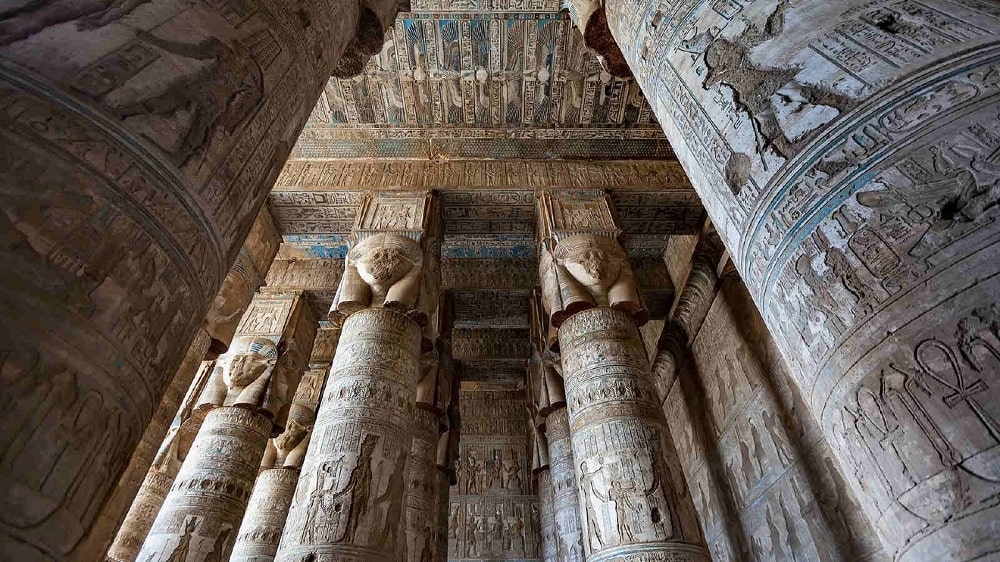The Dendera Temple Complex is a testament to the architectural prowess and religious significance of ancient Egypt. Located about 2.5 kilometers southeast of Dendera, Egypt, it is one of the best-preserved temple complexes from antiquity. This site not only offers a glimpse into the grandeur of ancient Egyptian architecture but also serves as a historical archive of various periods, including the Middle Kingdom, the Ptolemaic Era, and the Roman provincial rule.
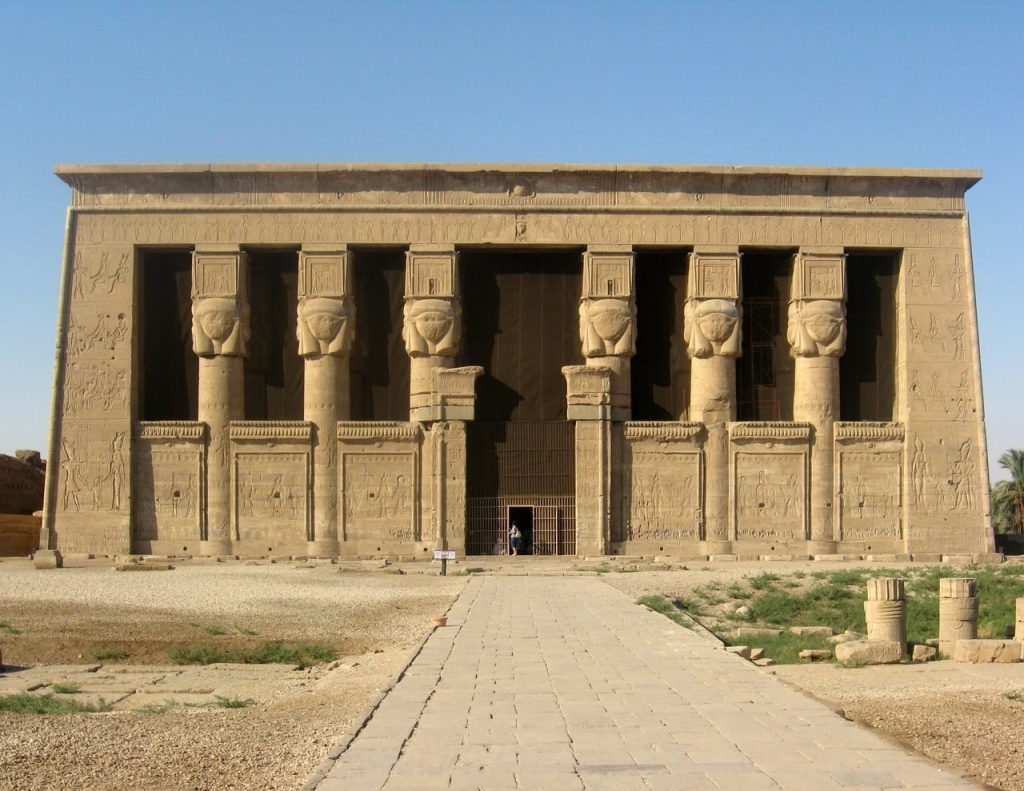
If you’re intrigued by the architectural marvels of ancient Egypt, you might also be interested in uncovering the mystery behind another iconic structure. How Long Did It Take to Build the Great Pyramid? reveals fascinating insights into the construction timeline of one of the most famous wonders of the world.
A Historical Overview of The Dendera Temple
The origins of the Dendera Temple Complex can be traced back to around 2250 BCE. Initial construction likely began during the reign of Pepi I and continued under his son, Merenre Nemtyemsaf I. Over the centuries, the site evolved, with significant contributions from different eras. The most prominent structure, the Temple of Hathor, began its construction around 54 BCE during the Ptolemaic Dynasty and was completed under Roman Emperor Trajan.
Early Constructions
- 2250 BCE: The first building on the site is believed to have been erected.
- Middle Kingdom: Continued development and additions to the complex.
- 345 BCE: The oldest standing structure, built by Nectanebo II.
In 1995 BCE, construction likely began on the Mentuhotep II monument, marking the oldest existing structure when the site was rediscovered. However, this monument was later moved to Cairo, and the oldest structure currently at Dendera dates from 345 BCE, built by Nectanebo II.
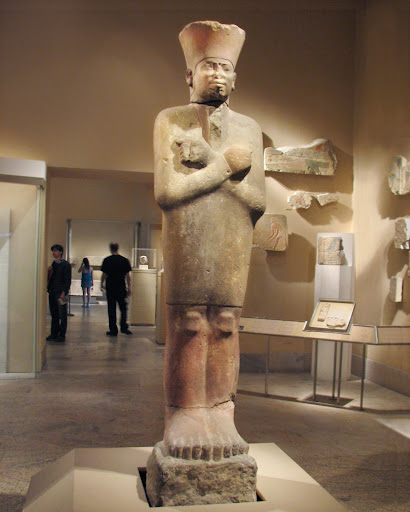
The Temple of Hathor
The centerpiece of the Dendera Temple Complex is the Temple of Hathor, an excellent example of traditional Pharaonic architecture. The construction of this temple was initiated during the Ptolemaic Dynasty and completed under Roman rule. The temple is dedicated to Hathor, the goddess of love, beauty, and music, and it is one of the best-preserved sites in Egypt.
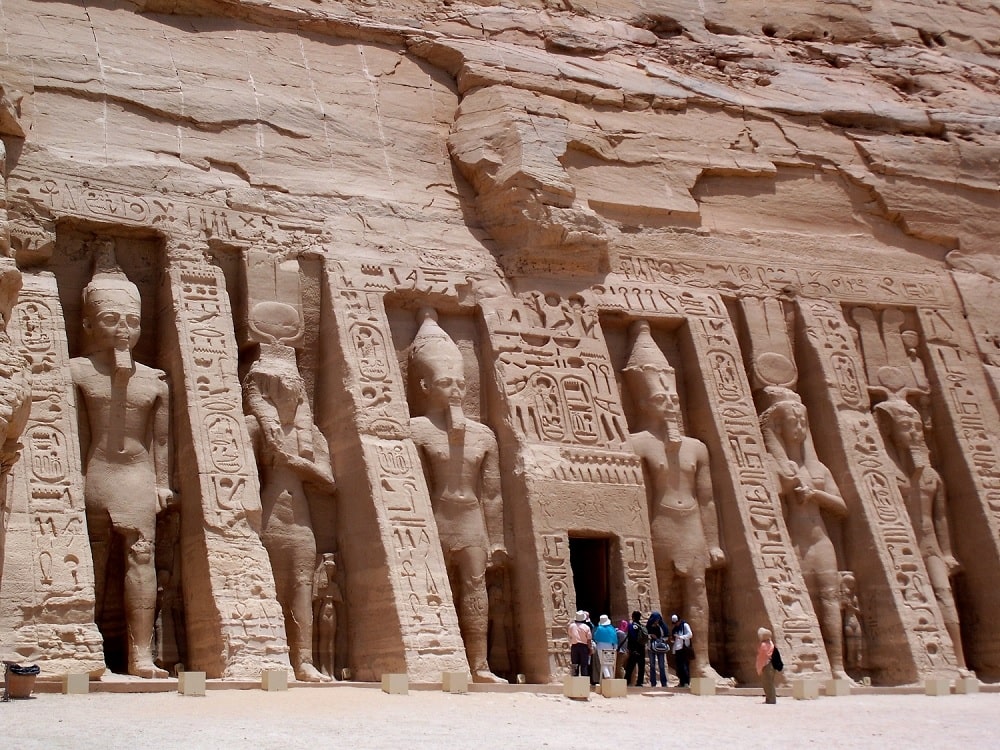
- Architectural Highlights:
- Monumental gateway constructed by Roman Emperors Trajan and Domitian.
- Well-preserved reliefs depicting Roman emperors making offerings to Hathor.
- Sacred Lake: Used for religious rituals and everyday purposes.
- Sanatorium: Functioned similarly to a Roman bathhouse, but for healing purposes.
- Mammisi of Nectanebo II: An earlier building within the complex.
The Temple of Hathor also plays a significant role in the celebration of the Happy Reunion, a period when Hathor would travel from Dendera to Edfu to be with her husband, Horus. This reunion signaled the beginning of the flood season of the Nile.
The Dendera Zodiac
One of the most fascinating artifacts from the Temple of Hathor is the Dendera Zodiac, a bas-relief depicting human and animal figures representing a night skyscape. This remarkable artifact was found on the ceiling of a chapel in the temple and is thought to be a map of the sky, not a giant horoscope or perpetual astrological tool.
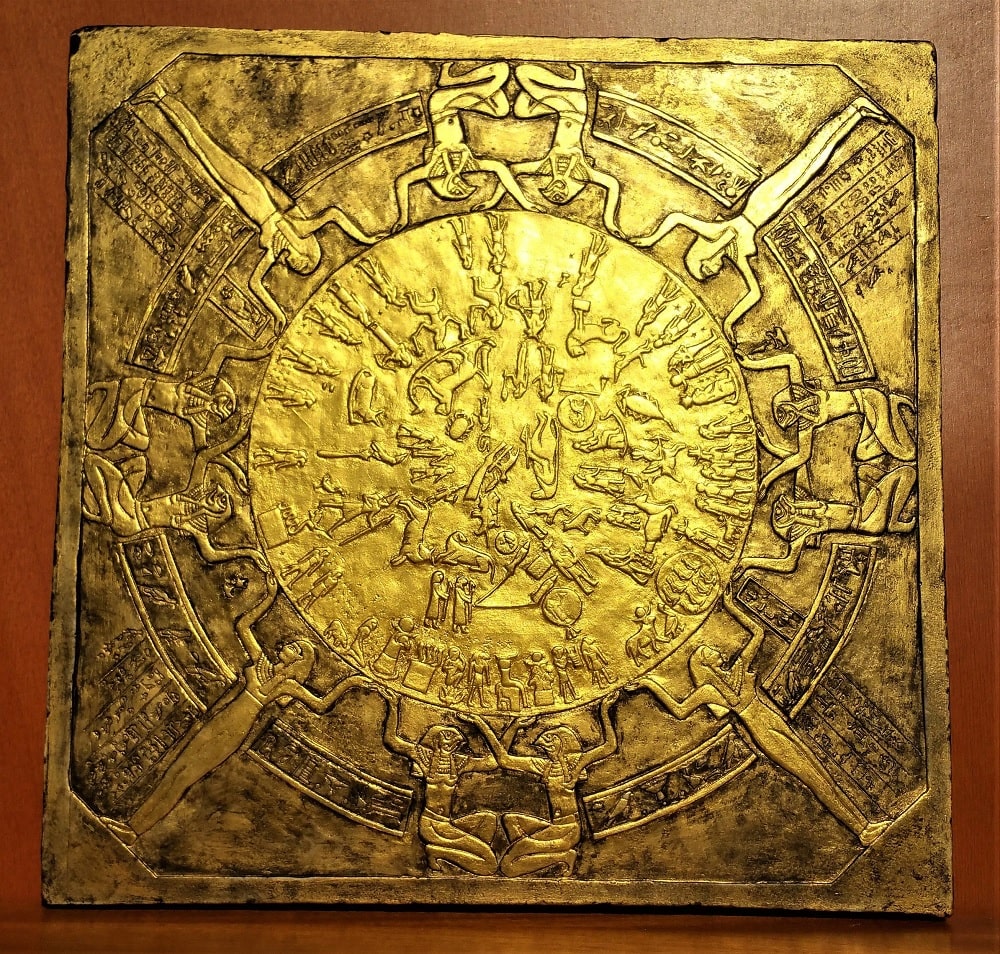
- Key Features:
- Represents constellations and planetary configurations.
- Dated to between June 15 and August 15, 50 BCE, based on two depicted eclipses.
- Illustrates the merging of Egyptian, Babylonian, and Greek astronomical theories.
The Dendera Zodiac is significant because it reflects the cultural synthesis that occurred during the Greco-Roman Period. The configurations of the planets among the constellations shown in the zodiac occur approximately once every thousand years, making it a unique historical and astronomical record.
In 1821, the Dendera Zodiac was transported to France with the permission of Mohamed Ali Pasha, the Turkish viceroy of Egypt. Today, it is on display at the Louvre in Paris, and the Egyptian government has requested its return.
The Dendera Light
Another intriguing aspect of the Dendera Temple Complex is the so-called “Dendera Light.” This term refers to stone reliefs in the Temple of Hathor that depict Harsomtus, a snake emerging from a lotus flower, enclosed within an oval container called a hn. This depiction resembles a lamp or light, leading to various interpretations and speculations.
- Depictions and Interpretations:
- Harsomtus, also known as Horus, is depicted as a primeval creator god.
- Often considered Hathor’s son or lover in mythology.
- The reliefs might represent the womb of Nut, the sky goddess.
The Dendera Light has sparked numerous theories, with some suggesting it represents advanced ancient technology. However, most Egyptologists believe it symbolizes religious and mythological concepts rather than technological artifacts.
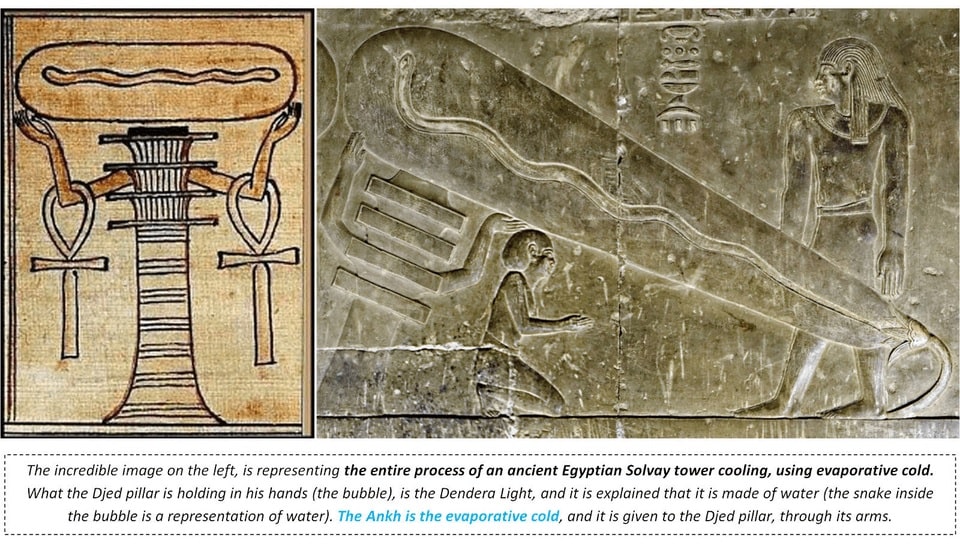
The Dendera Temple Complex stands as a remarkable monument to ancient Egyptian culture and architectural ingenuity. From the early constructions dating back to 2250 BCE to the intricate reliefs of the Temple of Hathor and the enigmatic Dendera Zodiac, this site offers a rich tapestry of history, religion, and astronomical knowledge. Whether you’re intrigued by the architectural marvels or the mythological narratives, the Dendera Temple Complex is a treasure trove of ancient wonders that continues to captivate historians, archaeologists, and visitors alike.
Frequently Asked Questions (FAQs)
1. When was Dendera Temple built?
The Dendera Temple Complex shows evidence of construction dating back to around 2250 BCE, with significant additions during the Middle Kingdom, the Ptolemaic Era, and Roman provincial rule.
2. What is the Dendera Zodiac?
The Dendera Zodiac is a bas-relief found on the ceiling of the Temple of Hathor. It depicts constellations and planetary configurations, providing a unique historical and astronomical record.
3. Where is Dendera Temple located?
Dendera Temple is located approximately 2.5 kilometers southeast of Dendera, Egypt, situated as a cult center for the goddess Hathor.
4. What is the significance of the Dendera Light?
The Dendera Light refers to stone reliefs in the Temple of Hathor that depict Harsomtus emerging from a lotus flower. These reliefs resemble a lamp or light and have sparked various interpretations.
5. Why is the Dendera Temple Complex important?
The Dendera Temple Complex is significant for its well-preserved architecture, historical artifacts like the Dendera Zodiac, and as a site of religious worship for the goddess Hathor.
6. Why has Dendera Hathor been removed?
The depiction of Hathor, goddess of love and fertility, has undergone alterations in historical contexts, reflecting changes in religious practices over time.
7. Which goddess was served as a cult center in the area around Dendera in Upper Egypt?
The area around Dendera in Upper Egypt served as a prominent cult center for the goddess Hathor, associated with love, motherhood, and joy.
8. Why is the Dendera Zodiac important?
The Dendera Zodiac is significant for its depiction of astronomical knowledge and its role in ancient Egyptian religious rituals, offering insights into ancient cosmology.
9. What is the Dendera Zodiac?
The Dendera Zodiac is a detailed bas-relief depicting astrological signs and planetary movements, housed within the Temple of Hathor at Dendera.
10. Where was the Dendera Zodiac found?
The Dendera Zodiac was discovered on the ceiling of a chapel within the Temple of Hathor at Dendera, Egypt, providing a unique glimpse into ancient Egyptian astronomy.
Use of Our Content
⚠️ Content on “Mystery Uncover” is protected under US and International Copyright Laws.
You are free to reuse, republish, and share our content by giving credit to the source as Mystery Uncover with a link to the original material on mysteryuncover.com.


